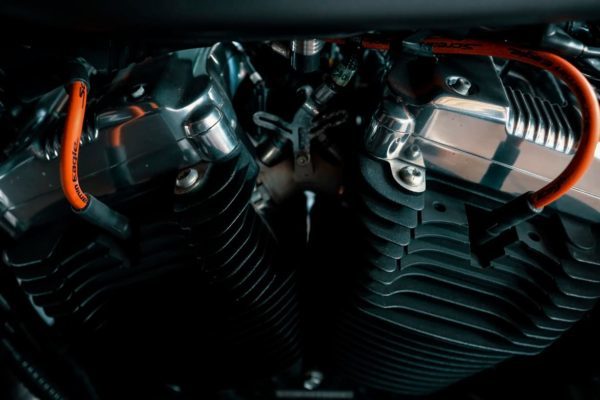Motorbike overheating is a common reason that riders face in their day-to-day life. And to tackle this problem, riders use motorbike coolants. Now the question arises, what is coolant for motorcycles? Here is the standard guide for motorbike coolants.
Motorcycle coolant is the liquid that absorbs almost all heating that a motorbike produces when a rider rides a motorbike at high speed. Overheating makes the motorbike engine parts made from iron expands-and; that’s why motorbikes use a coolant.
Let’s look at what it means and what you can do about it.
While writing this post, I leave no stone unturned so you can know all about motorcycle coolant.
Table of Contents
What is Coolant for Motorcycles?
We all know overheating is a serious concern for any motorcycle, and that’s why riders use motorcycle coolants. Now the question is, what is motorcycle coolant?
Before understanding the motorcycle coolant, you must understand how a motorbike causes overheating, when riding for a long time, the piston in the engine causes friction which produces heating.
And to tackle this problem, riders use motorcycle coolants.
What’s the Need for Motorcycle Coolant?
So far, you understand that motorbikes produce heating when riding for a long time. Now the question arises, what’s the need for motorcycle coolant?
When riding for a long time, the piston made from iron produces heat because of friction between the cylinder and piston.
And metal has expansion properties causing the metal to expand when overheated. So in this sense, the piston became expanded, causing more friction which ultimately malfunctioned the engine.
That’s why motorbike experts all around the globe recommend using coolants to protect your motorbike engine from malfunctioning.
How Does Motorcycle Coolant Work?
So far you understand what the need for motorcycle coolant is? Now the real question is, how does motorcycle coolant work?
Motorcycle coolant is made from the heat-absorbing molecular formula, specially made to absorb heat when flowing from the engine.
When flowing from the engine, the coolant absorbs almost all energy. It carries it to the radiator, which dissipates the motorbike heat into the atmosphere.
And this is how a motorbike coolant protects your precious engine from malfunctioning and overheating.
Can You Use Water in Place of Motorbike Coolant?
So far, you understand what motorbike coolant is; now the question is can you use water instead of motorbike coolant?
According to industry experts, using water as a motorbike coolant is an injustice that you can do with your motorbike.
It is because, when overheard, your motorbike can reach over 230 F temperature making water in your engine converts into steam.
And steam has expansion properties that can puncture inner pipes in your motorbike engine.
That’s why experts always recommend never using water in the place of motorbike coolant.
What to Do When Motorcycle Engines Overheat?
I mentioned some reasons why your motorcycle engine overheats. But how will you detect if your motorbike engine overheats or not?
Although new motorcycles have a heat indicator that will indicate something wrong with your motorcycle engine. Still, it would be best to not rely on the indicator solely.
Detecting engine overheating isn’t wrapping your head around something. You just need to focus on some signs.
The most significant sign of motorcycle overheating is the burning sound and extra smoke coming from the exhaust. Additionally, you’ll feel extreme heat on your feet while riding.
If your motorbike engine overheats ever, then you must pull over your motorbike and wait at least 15 minutes to cool down the motorbike engine again.
How to Prevent Motorcycle Engines Overheating:
Engine overheating might cause some severe damage to your motorbike. Unfortunately, there’re many motorbikes ruined because of engine overheating.
The best part is, that you can prevent engine overheating. Here’re some ways through which you can avoid engine motorbike overheating.
| How to Prevent Your Motorbike Engine from Overheating: |
| Check the oil level of your motorbike. |
| Check the coolant level. |
| Always use suitable oil for your motorbike. |
| Check if any leakage is there. |
| Check the radiator fan. |
Check Oil:
Oil helps to reduce the friction between cylinder and piston. And in the absence of enough oil, the friction will cause overheating.
It’s always better to check the oil level before going for a long ride.
Suitable Oil:
It’s not always the lack of oil that overheats the motorbike engine. Unsuitable motorcycle oil could also hamper engine performance. It’s always better to put suitable oil which your motorbike engine demands.
Check Coolant Level:
As mentioned above, coolant protects the engine from overheating. It would be best if you check the coolant level every six months.
Check Leakage:
If you always find a low level of coolant every two months, then you should focus on radiator leakage and see if the coolant is leaking or not.
Check Radiator Fan:
If everything goes right and the motorbike is still suffering from overheating, then you shouldn’t forget to check the radiator fan before you miss the boat.
Do Faulty Motorcycle Coolers Cause Motorbike Overheating?
After checking the oil level and types, now it’s time to review the coolant level.
Coolant is the fluid that keeps the internal motorbike parts’ temperature in the range. Specifically, the coolant helps to cool down the motorbike exhaust and engine temperature in limit.
Not only the lack of coolant might overheat the motorbike engine, but also the type and constituents of coolant can overheat the engine.
For instance, in some coolants, you can mix the water in 50:50 quantity. And if the quantity isn’t evenly distributed, then the coolant may not work effectively.
Also, adding water to the coolant lowers its boiling point, which isn’t good for your motorbike engine.
Coolant has a hygroscopic property which means it can absorb water from the environment around it. And that’s why you should always avoid using the opened bottle coolant.
There are mainly two types of coolant: Ethylene glycol and propylene glycol. If you don’t ride your motorbike too harshly, then the Ethylene glycol is more than enough for your motorbike.
And if you’re a professional rider, then you should go with a propylene glycol-type coolant, considering changing the motorbike oil in a year or two for better performance.
Also, read my previous post where I discussed how your motorbike engine starts to overheat and what you can do about it, CLICK HERE to read.
Frequently Asked Questions:
What’s the need for motorcycle coolant?
Metal has an expansion property when heated causing the metal to expand when overheated. So in this sense, the piston became expanded, causing more friction which ultimately malfunctioned the engine, thus you need motorcycle coolant.
How does motorbike coolant work?
When flowing from the engine, the coolant absorbs almost all energy. It carries it to the radiator, which dissipates the motorbike heat into the atmosphere.
Can you use water in place of a motorbike coolant?
No, because, when overheard, your motorbike can reach over 230 F temperature making water in your engine converts into steam.
What to do when the motorbike engine overheats?
If your motorbike engine overheats ever, then you must pull over your motorbike and wait at least 15 minutes to cool down the motorbike engine again.
When you should check radiator leakage?
If you always find a low level of coolant every two months, then you should focus on radiator leakage and see if the coolant is leaking or not.
Final Verdict:
What is a coolant for motorcycles? Motorcycle coolant is the liquid that absorbs almost all heating that a motorbike produces when a rider rides a motorbike at high speed. Overheating makes the motorbike engine parts made from iron expands-and; that’s why motorbikes use a coolant.
I’ve mentioned some ways to prevent your motorbike engine from overheating, which you consider most when you’re riding for a long time.
John, this side! My passion for motorbikes started when I was 12. I experienced many accidents and even lost some friends too. And it inspired me to create this website so that no parents in this world would lose their child while enjoying riding.


